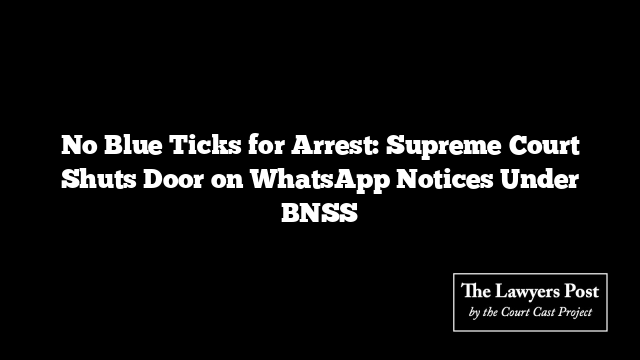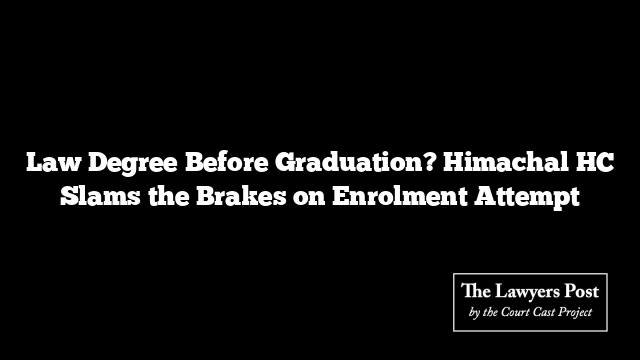The Supreme Court has drawn a firm line through the chat screen—police can’t slide Section 35 notices under your digital door via WhatsApp or email. If liberty is on the line, a knock at the door is still the law’s preferred method.
In a ruling that reinforced the boundary between convenience and constitutionality, the top court declared that any notice under Section 35 of the Bharatiya Nagarik Suraksha Sanhita (BNSS) must be served physically—face to face, paper in hand—not digitally. A bench of Justices MM Sundresh and N Kotiswar Singh said that something as serious as a possible arrest cannot begin with a message bubble and two grey ticks.
The ruling came in response to a plea from the State of Haryana, which wanted permission to send such notices electronically, arguing that it would help conserve resources and tackle accused persons who dodge service. But the Supreme Court wasn’t convinced, reiterating that the process of serving such notices isn’t just a bureaucratic box to tick—it directly engages a citizen’s right to liberty.
The Court wasn’t swayed by the argument that other sections of the BNSS (like 64(2), 71 and 530) allow for digital summons. It drew a sharp line between judicial summons issued by courts and executive notices from investigating agencies. A summons, the Court explained, is a judicial act governed by strict procedural safeguards. A Section 35 notice from the police? That’s an executive act with arrest consequences—and deserves more than a forwarded PDF.
“Electronic convenience cannot override constitutional substance,” the Court essentially said. Under Section 35(3), such notices are issued when there’s credible information suggesting a cognizable offence, but the arrest isn’t yet deemed necessary. However, ignore such a notice—and arrest becomes very real, thanks to Section 35(6). That kind of potential consequence, the Court stressed, demands robust procedural protection, including in how the notice is served.
Senior Advocate Siddharth Luthra, appearing as amicus curiae, bolstered the Court’s position. He argued that digital service simply doesn’t match up to the gravity of a Section 35 notice, especially since non-compliance could land someone behind bars. Luthra noted that Section 530—which Haryana cited in support—applies to courts, not police investigations. The omission of “investigation” from that section wasn’t an oversight, he said—it was intentional.
The Court agreed, pointing out that where the BNSS wants digital tools to be used during investigations—such as for filing reports or collecting documents—it says so explicitly. Section 35 is silent on this, and for good reason.
So until lawmakers rewrite the rules, the Supreme Court has made it clear: if the police want to call you in, they need to do it the old-fashioned way—with a paper trail, not a notification ping.





